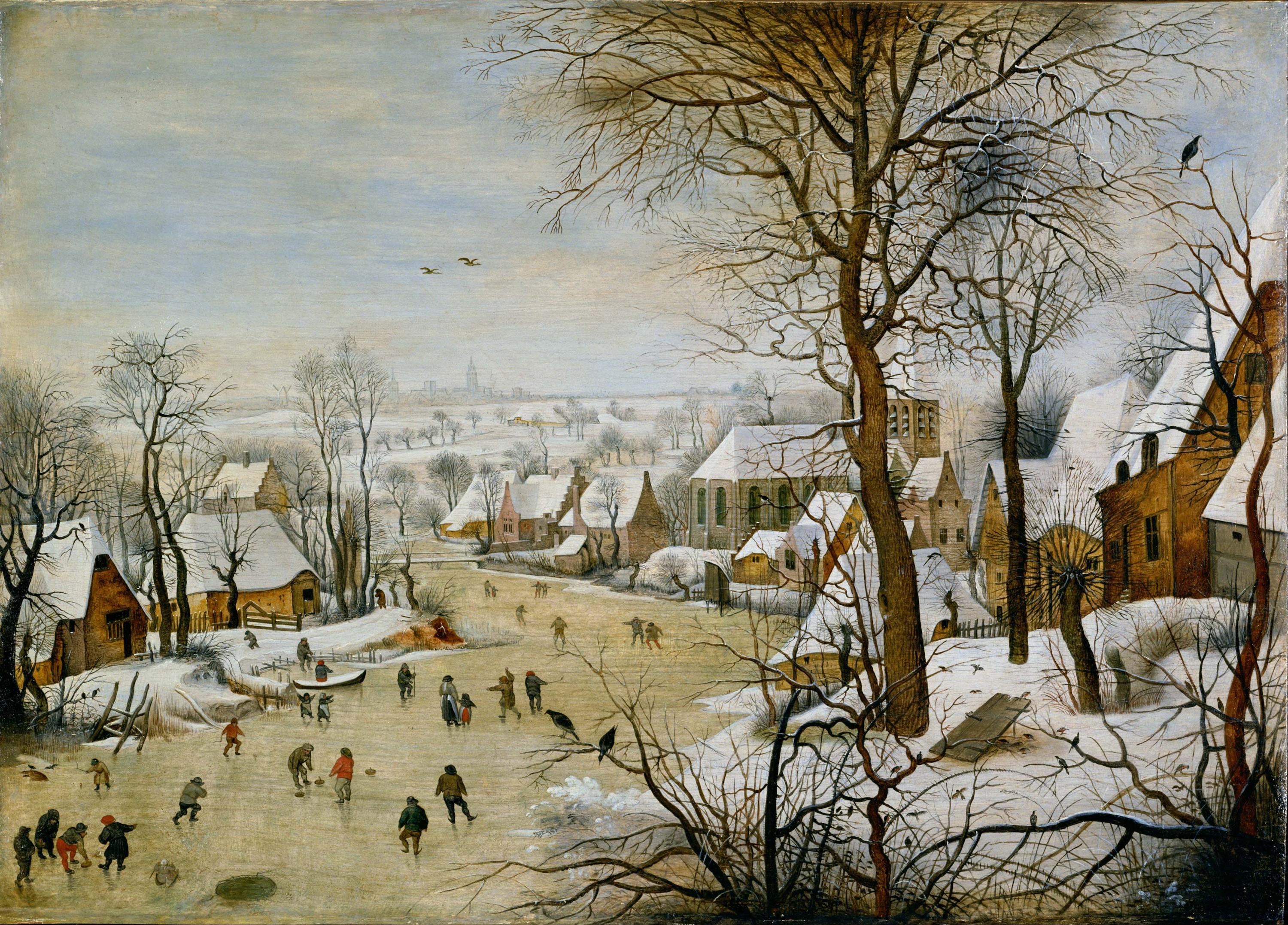The painting may make reference to the winter of 1564/65 which was, according to the records, particularly harsh.
This scene probably contains a deeper meaning, however, attached to an allegorical interpretation of human existence that was widespread in the 16th century. According to this concept, the devout person is a pilgrim, crossing a life sown with dangers and temptations, which he must avoid in order to arrive at salvation. Hence the bird traps, like the one in the right-hand foreground, symbolised in the literature of the time the baits of the devil for careless souls (the bird being traditionally the symbol of the soul). Similarly, artists frequently used skating scenes to express the uncertain (slippery) nature of existence. Skaters and birds meet here in their insouciance and their vulnerability towards the perils facing them. With his at once precise and synthetic vision of the world, the artist has managed to renew this theme with masterly skill.
Have a glimpse at the article about another great masterpiece by Bruegel: "Pieter Bruegel The Elder, The Hunters In The Snow In Movies".


 Pieter Bruegel the Elder
Pieter Bruegel the Elder